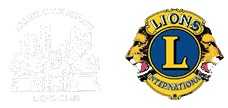About Malta
MALTA, officially the Republic of Malta, a member of the European Union, is an island in the Mediterranean Sea.
The Maltese archipelago covers an area of 316 sq. kilometres and besides the main island of Malta consists of Gozo, Comino, Cominetto and Filfla.
Malta, a member of the Commonwealth, joined the European Union on 1st May 2004 and adopted the euro as its official currency on 1st January 2008. The official languages of Malta are Maltese and English. However Italian which was the official language until 1934 is still widely spoken.
The population of Malta is around 410,000. The island is divided into 67 localities with Valletta the capital city.
The most notable localities are:
 Valletta, the capital city, founded in 1566 by Grandmaster Jean de La Valette, with a population of about 6,300. The city is often called “Citta Umilissima”. However it is better known as Valletta or “Il-Belt” (The City). The city is renowned for its palaces, auberges and St. John’s Co-cathedral.
Valletta, the capital city, founded in 1566 by Grandmaster Jean de La Valette, with a population of about 6,300. The city is often called “Citta Umilissima”. However it is better known as Valletta or “Il-Belt” (The City). The city is renowned for its palaces, auberges and St. John’s Co-cathedral.
 Mdina, also known as “The Silent City”, was the old capital city of Malta. The population of Mdina is just 260 mostly clergy and nobles. It was also known as “Notabile”. In Mdina one can find several palaces and also the cathedral of St. Peter and St. Paul.
Mdina, also known as “The Silent City”, was the old capital city of Malta. The population of Mdina is just 260 mostly clergy and nobles. It was also known as “Notabile”. In Mdina one can find several palaces and also the cathedral of St. Peter and St. Paul.
 Cottonera, is an area to the east of Valletta across the Grand Harbour and comprises three cities, namely Vittoriosa (also known as Birgu) with 2,700 inhabitants, Cospicua (Bormla) with 5,700 inhabitants and Senglea (Isla) with 2,500 inhabitants. Senglea is also known as the “Citta invicta”. Fort St’ Angelo, the headquarters of the Knights of Malta, dominates the city of Vittoriosa.
Cottonera, is an area to the east of Valletta across the Grand Harbour and comprises three cities, namely Vittoriosa (also known as Birgu) with 2,700 inhabitants, Cospicua (Bormla) with 5,700 inhabitants and Senglea (Isla) with 2,500 inhabitants. Senglea is also known as the “Citta invicta”. Fort St’ Angelo, the headquarters of the Knights of Malta, dominates the city of Vittoriosa.
